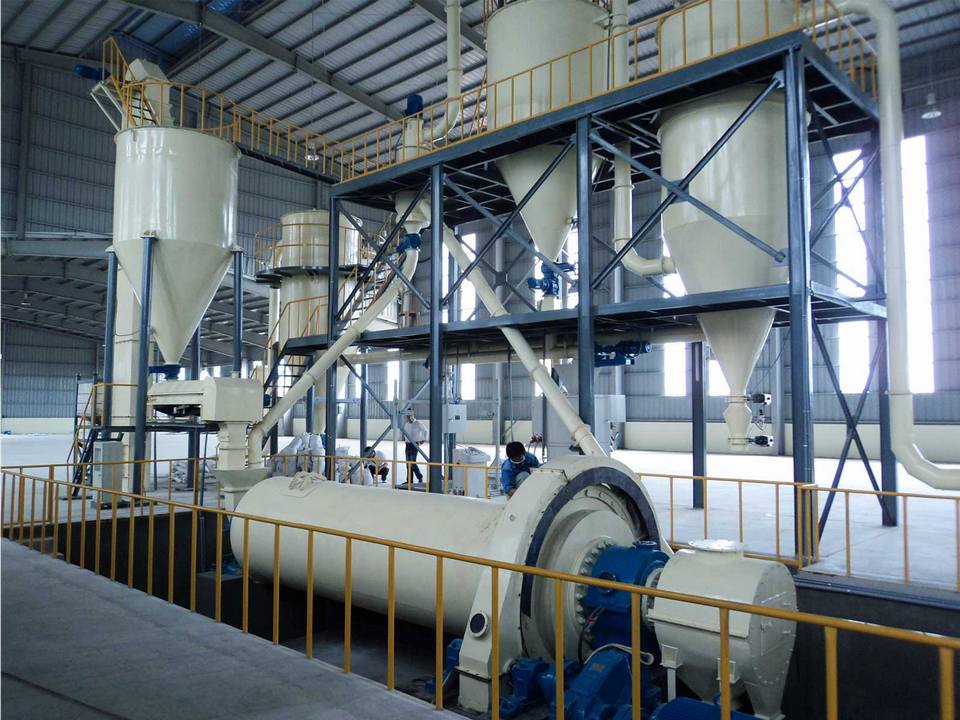Common problems of ball mills and solutions to failures

1. When the ball mill is running, there is a regular percussive sound, and the sound is loud. When the ball mill rotates, the liner hits the grinding cylinder of the ball mill. Judge the position of the liner of the ball mill according to the sound, find out the loose bolts and tighten them separately.
2. The temperature of the bearings of the ball mill and the motor has risen, exceeding the requirements. Try to feel the bearing by hand. If the temperature is too high, check and handle the ball mill from the following points.
(1) Check the lubrication points of each part of the ball mill, and check whether the brand of lubricating oil used is consistent with the factory instructions.
(2) Check whether the lubricating oil and grease of the ball mill have deteriorated.
(3) Check whether the lubrication pipeline of the ball mill is blocked, or the lubricating oil does not directly enter the lubrication point, and the insufficient amount of oil causes heat.
(4) The side clearance of the bearing bush of the ball mill is too small, the clearance between the bearing bush and the shaft is too large, and there are too many contact points, forming a uniform oil film on the bearing bush.
(5) Too much or too little grease in the rolling bearing of the ball mill will form rolling elements. Stirring the grease will generate heat, and the heat is not easy to disperse. If the lubrication is too little or poor, add enough oil according to the regulations, generally 1/3 ~ 1/2 of the bearing clearance.
(6) The sealing device of the hollow shaft at both ends of the ball mill body is too tight, or the iron part of the sealing body is in direct contact with the shaft.
The above problems should be dealt with in an appropriate way. Only when the side clearance of the bearing bush is too small or the bottom contact angle is too big, an oil jack must be used to lift the grinding cylinder, and the bearing bush should be drawn out from one side of the shaft and scraped separately.
3. The bearing of the reducer of the ball mill is overheated: In addition to checking the temperature rise of the bearing of the ball mill, check whether the vent of the reducer is blocked and clear the vent.
4. The ball mill motor produces vibration after starting, the main reasons are as follows:
(1) The gap between the two wheels of the ball mill coupling is too small to compensate for the displacement caused by the self-seeking core when the motor is started.
(2) The alignment method of the ball mill coupling is incorrect, which causes the two shafts to be misaligned.
(3) The coupling bolts of the ball mill are tightened asymmetrically, and the tightening force is different.
(4) The outer ring of the ball mill bearing moves.
Treatment method: Adjust the gap between the two wheels as required to make the two shafts concentric. Tighten the coupling bolts symmetrically with the same torque.
When the rotor is unbalanced, the ball mill rotor should be pulled out for static balance.
5. The ball mill reducer drives the ball mill to produce greater vibration
(1) The balance shaft of the ball mill and the reducer is not in a straight line
When the mill was installed with the liner, the secondary grouting was not carried out, or the anchor bolts were not tightened after the secondary grouting. Rotating the mill barrel with a hoist causes one end of the mill barrel to shift, and the two shafts are not in a straight line. The reducer drives the mill to cause vibration.
Treatment method: readjust so that the axis of the ball mill and the axis of the reducer are on the same plane axis.
(2) Large-scale ball mills are bulky and heavy, causing the foundation to sink and shift. Set up a settlement monitoring point next to the foundation, observe and adjust when the settlement is found.
6. Abnormal running sound of ball mill reducer:
The normal operation sound of the ball mill reducer should be uniform and stable. If there is a slight knocking sound or hoarse friction sound on the gear, there is no obvious change during operation, you can continue to observe, find out the cause, and stop the ball mill for processing. If the sound becomes louder, stop the ball mill inspection immediately.
